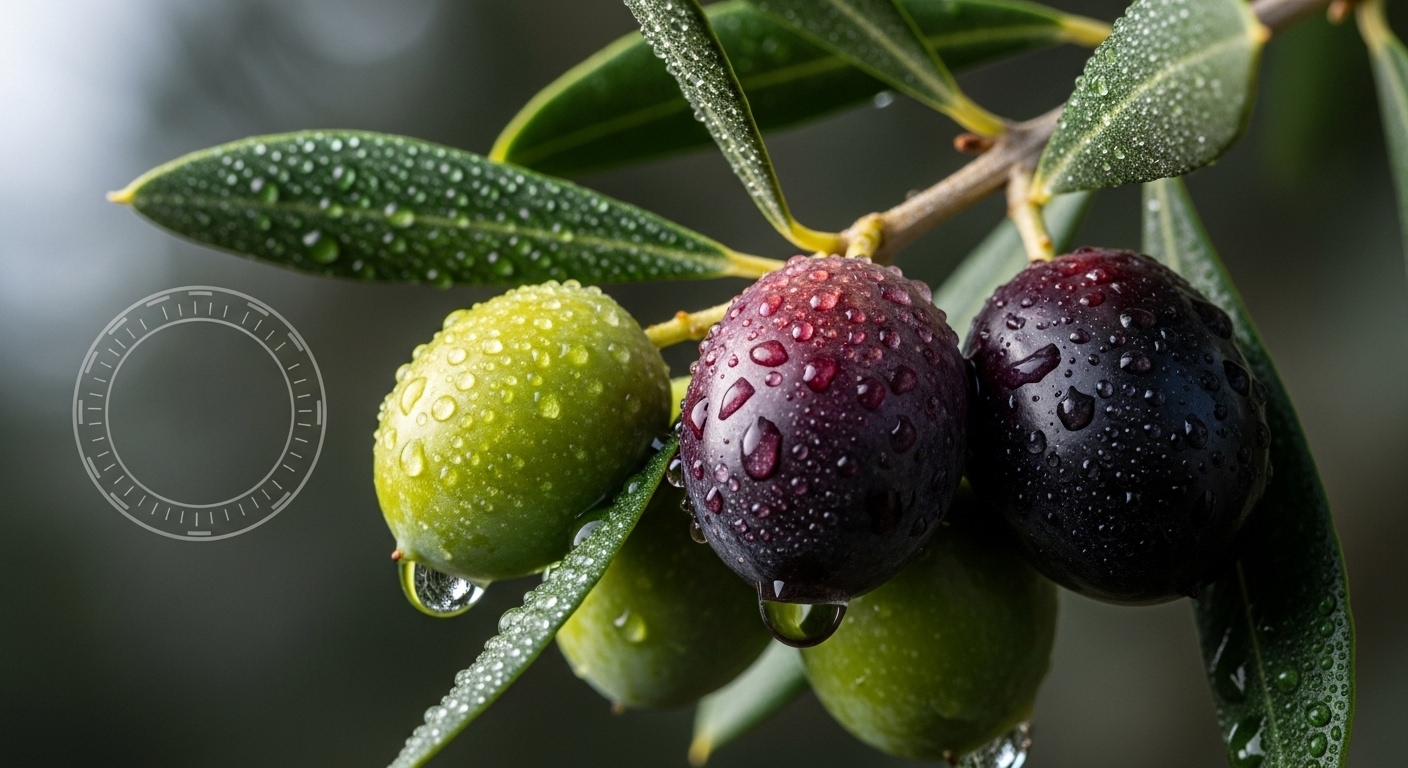Olive oil production is not merely an agricultural process; it is an ancient tradition that pulses with the rhythm of the seasons and aligns with the heartbeat of the soil. This annual cycle is both a responsibility and a ceremony for producers who heed nature’s call. In this process, synchronized with the life rhythm of olive trees, timing is as crucial as how we embrace it. For olive oil is not just a product but a way of life born from the fusion of patience, intuition, and labor.
The First Spark: Flowering and the Dawn of Hope
It all begins in spring. Olive trees awaken from their long winter slumber, adorned with white blossoms. This delicate period brings the first hopes of the year. The success of flowering directly impacts the yield. The strength of the wind, the timing of the rain, even the wanderings of bees can alter the course of this stage. Producers observe the trees, monitor the soil, and take care to move in harmony with nature rather than intervene.
Fruit Formation: The Quiet Patience of Summer
In the summer months, the small fruits on the trees begin to grow. Though this period may seem calm, it is one of the most critical times. As the olives ripen under the sun, they gradually increase their oil content. For producers, this is a time for planned irrigation, pruning, and maintenance. The relationship with the tree relies heavily on observation, patience, and intuition.
Harvest Time: The Sacred Ritual of Autumn
The heart of olive oil production beats in autumn. Olives are harvested between late September and early December, depending on the variety, geography, and the desired type of oil. Harvest time is not just physical labor; it is a communal event. Families, villages, and teams come together; tables are set up in the fields, the early morning bustle of picking begins, and sacks of olives are carried. All of these are parts of a ritual.
Early-harvest olives yield oils with higher polyphenol content, aromatic and fruity notes, while late-harvest olives produce oils that are more mature, smooth, and balanced. Timing here determines not only quality but also character.
The Pressing Process: The Value of Minutes
Once harvested, olives must be pressed quickly. As time passes, the fruit oxidizes and loses quality. Modern cold-pressing systems have replaced traditional stone mills, making the process more hygienic and precise. Yet, many producers still treat the first pressing day as a “moment of beginning.” Some start the day with a prayer, while others celebrate the season’s bounty by tasting the first oil together with their families.
Resting and Bottling the Oil
The oil from pressing is not bottled immediately. It is first left to rest, allowing sediments to settle. This waiting period helps the oil’s character develop. Like wine from grapes or cheese from milk, patience is a key ingredient in olive oil’s flavor. Bottling is the final step in the process but also a symbolic closure of the olive’s year-long life cycle.
Production as a Tradition
Olive oil production is not about dominating nature but the art of living in harmony with it. Each season adds meaning and soul to this production cycle. Harvest celebrations, the sharing of the first pressing, and oil-tasting rituals—these are nature’s rituals, fading in the modern world. An olive oil bottle on your shelf is not just a product; it is a summary of the seasons, labor, and respect for nature. That’s why every drop carries the story of a year.




